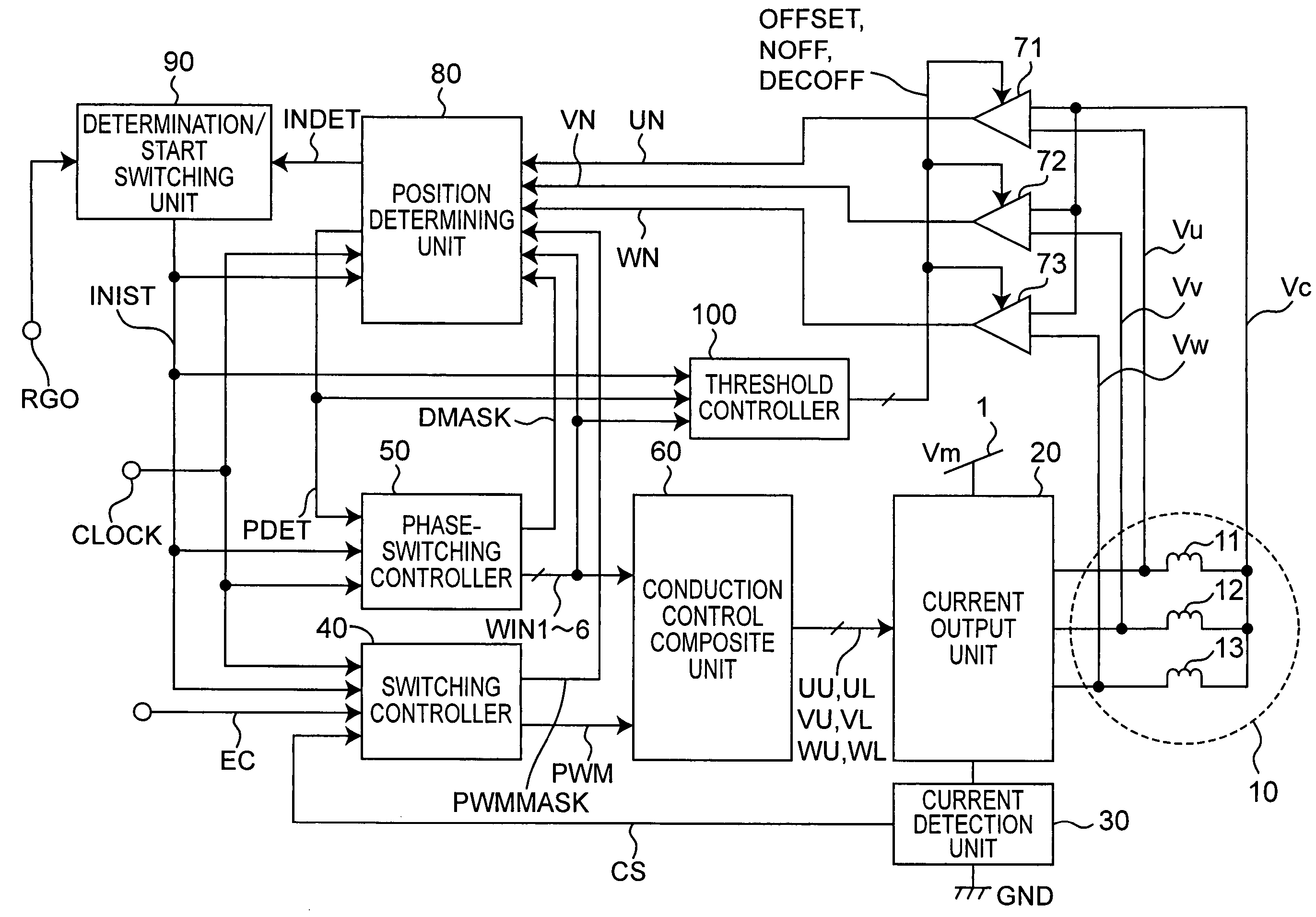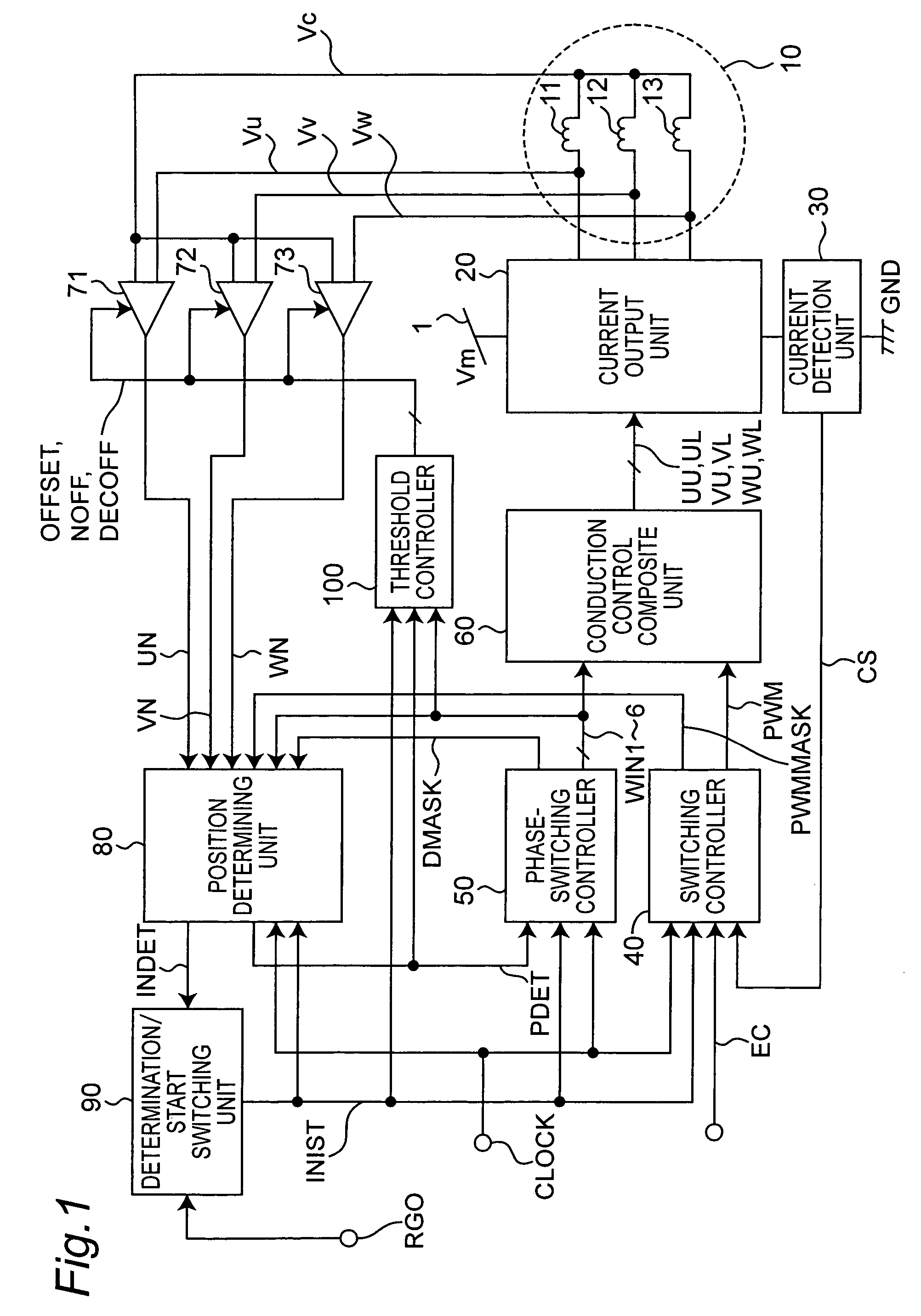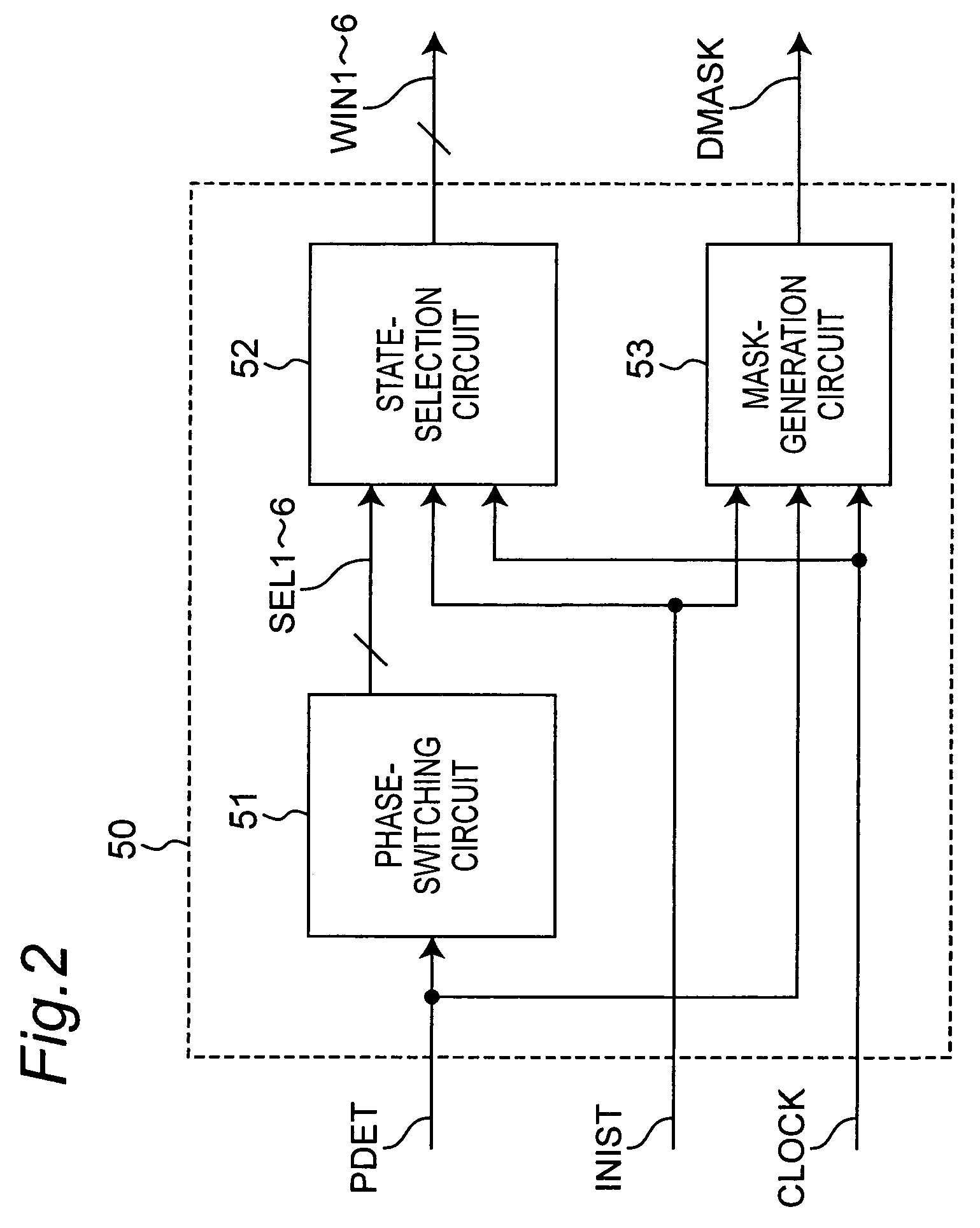Motor driving apparatus and motor driving method
a technology of motor driving and motor stops, which is applied in the direction of motor/generator/converter stoppers, electronic commutators, dynamo-electric converter control, etc., can solve the problems of loss of synchronism and reverse rotation, oscillation, loss of detection errors, etc., and achieve stable sensor-less starting, shortening the period of time, and simple apparatus structure
- Summary
- Abstract
- Description
- Claims
- Application Information
AI Technical Summary
Benefits of technology
Problems solved by technology
Method used
Image
Examples
embodiment 1
[0046]FIG. 1 shows a structure of a sensor-less motor driving apparatus in accordance with Embodiment 1 of the present invention. A motor 10 to be controlled by the motor driving apparatus of the present embodiment includes a rotor having a magnetic field section formed by a permanent magnet and a stator having Y-connection of a U-phase winding 11, a V-phase winding 12 and a W-phase winding 13.
[0047]The sensor-less motor driving apparatus is provided with a current output unit 20, a current detection unit 30, a switching controller 40, a phase-switching controller 50, a conduction control composite unit 60, comparators 71, 72 and 73, a position determining unit 80, a determination / start switching unit 90 and a threshold controller 100.
[0048]Signals to be transmitted and received in the motor driving apparatus of the present embodiment are described below.[0049]CLOCK: A clock signal (duty ratio=50% in the present embodiment).[0050]DMASK: A mask signal for masking a ringing period of ...
embodiment 2
[0117]In Embodiment 1, as shown in FIG. 18A, a period in which all the phases are set to high impedance during on-period of the signals WIN1 to 6 of the respective phases is provided. This arrangement is made so as to once set, to zero, a current in a stator winding generated on application of a current, consequently to achieve an accurate detection in the next detecting operation. However, as shown in FIG. 18A, the residual current in the winding becomes zero in a comparatively early stage during the high impedance period of the all phases. After the residual current becomes zero, it is not necessary to set all the phases to high impedance state, and as the high impedance period of all the phases becomes shorter, it becomes possible to shorten the processing time as a whole. Therefore, the present embodiment will discuss an arrangement for shortening the time required for determining the position by shortening the high impedance period of all phases in comparison with the arrangeme...
PUM
 Login to View More
Login to View More Abstract
Description
Claims
Application Information
 Login to View More
Login to View More - R&D
- Intellectual Property
- Life Sciences
- Materials
- Tech Scout
- Unparalleled Data Quality
- Higher Quality Content
- 60% Fewer Hallucinations
Browse by: Latest US Patents, China's latest patents, Technical Efficacy Thesaurus, Application Domain, Technology Topic, Popular Technical Reports.
© 2025 PatSnap. All rights reserved.Legal|Privacy policy|Modern Slavery Act Transparency Statement|Sitemap|About US| Contact US: help@patsnap.com



